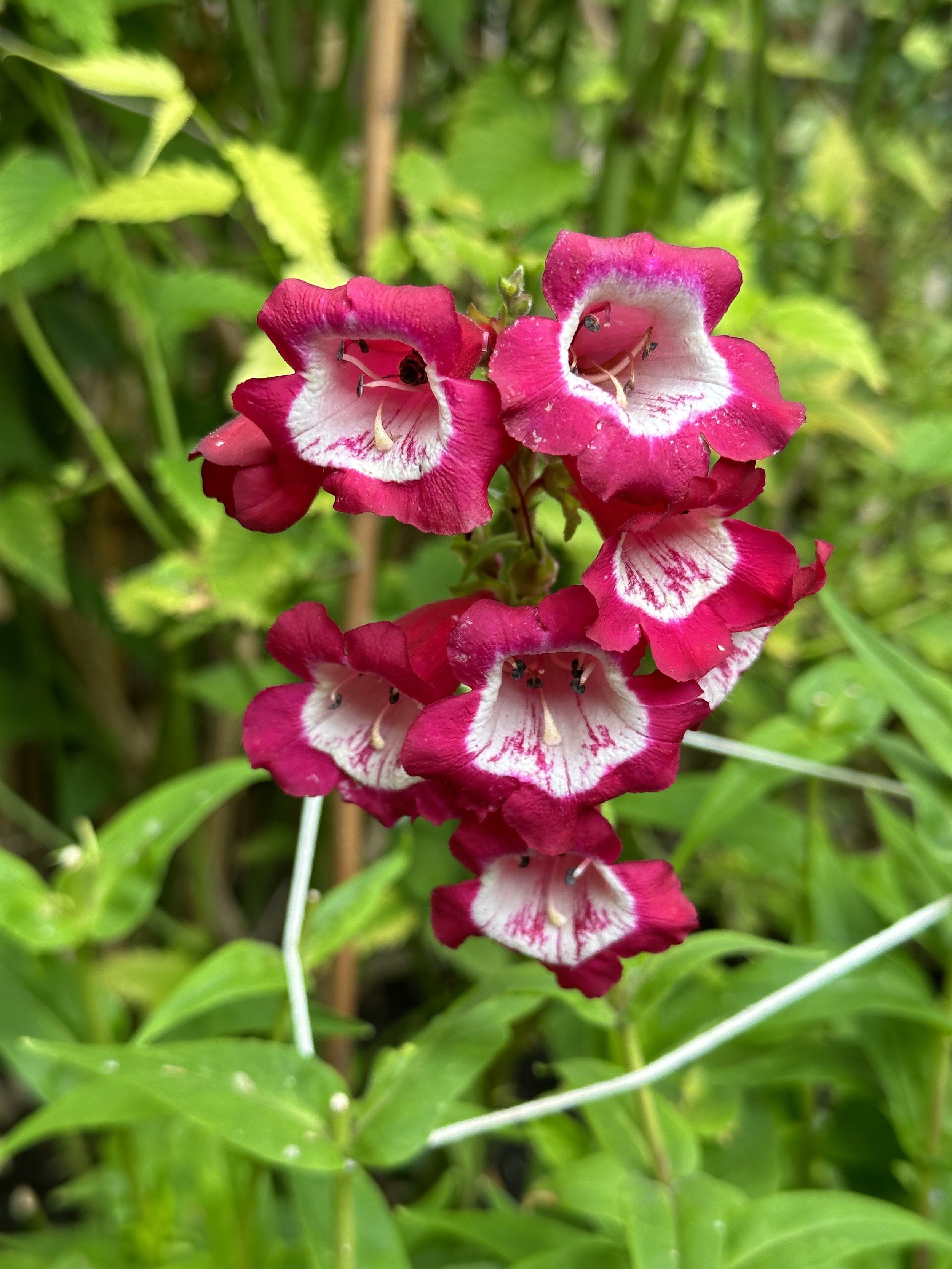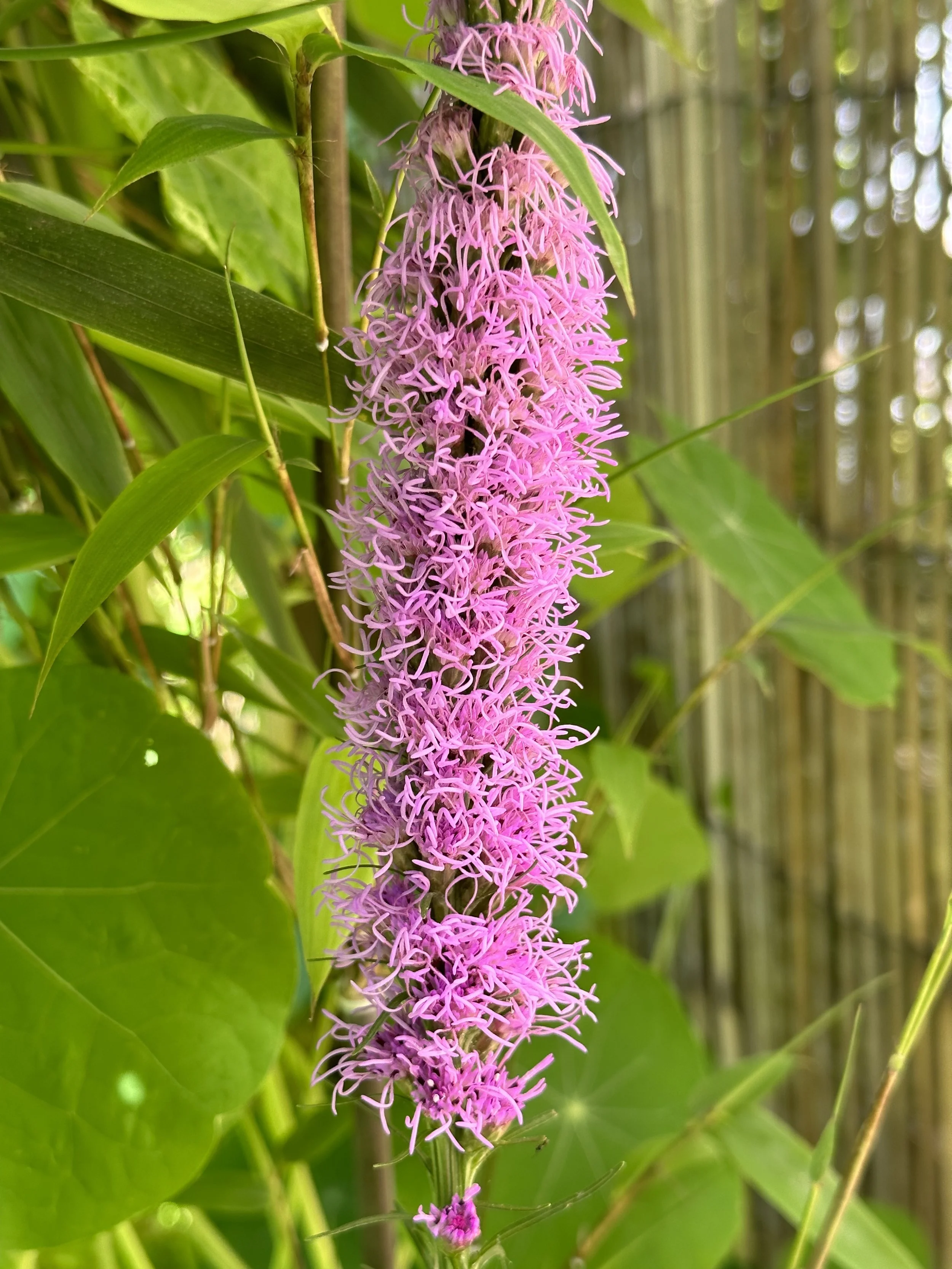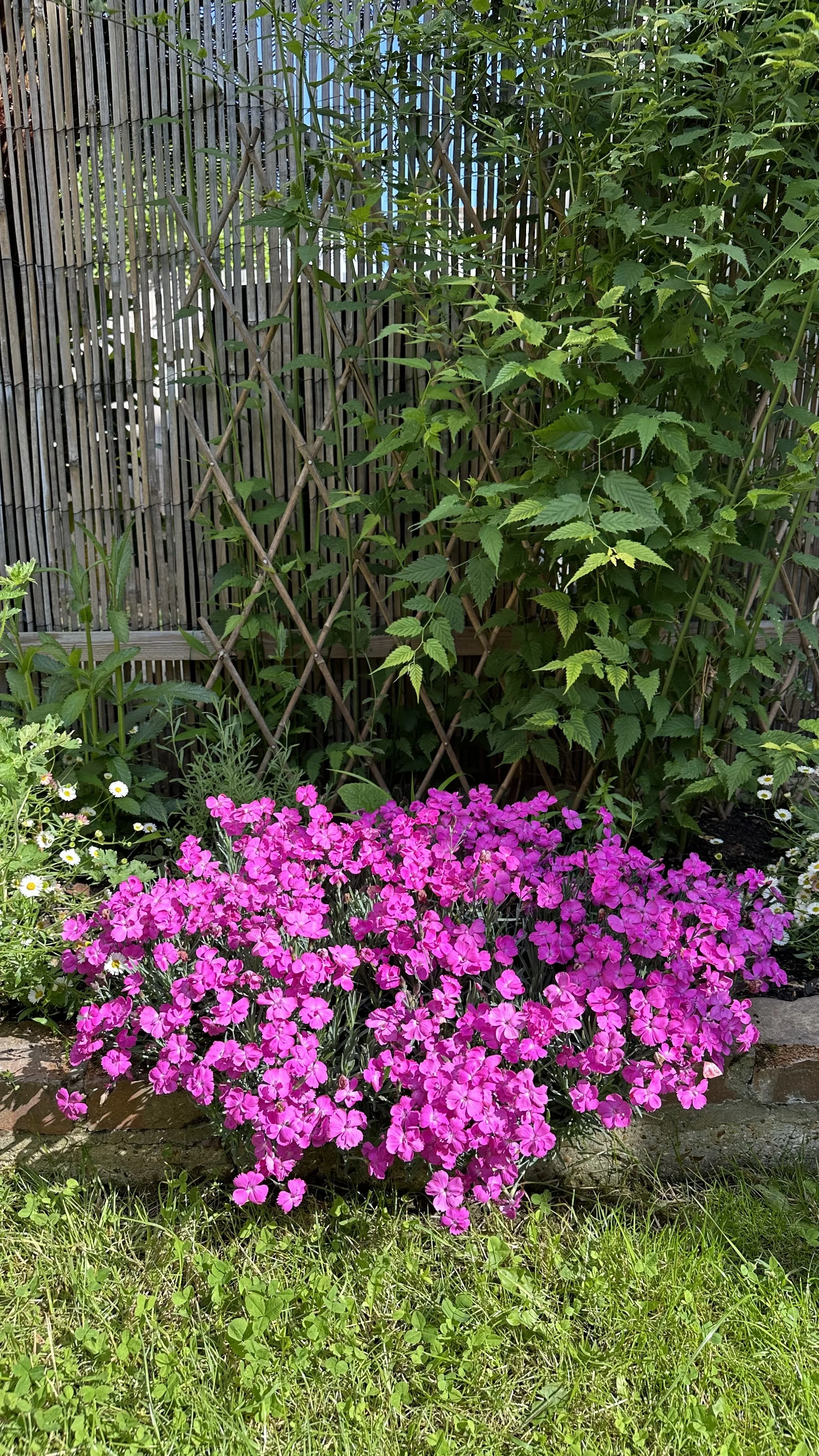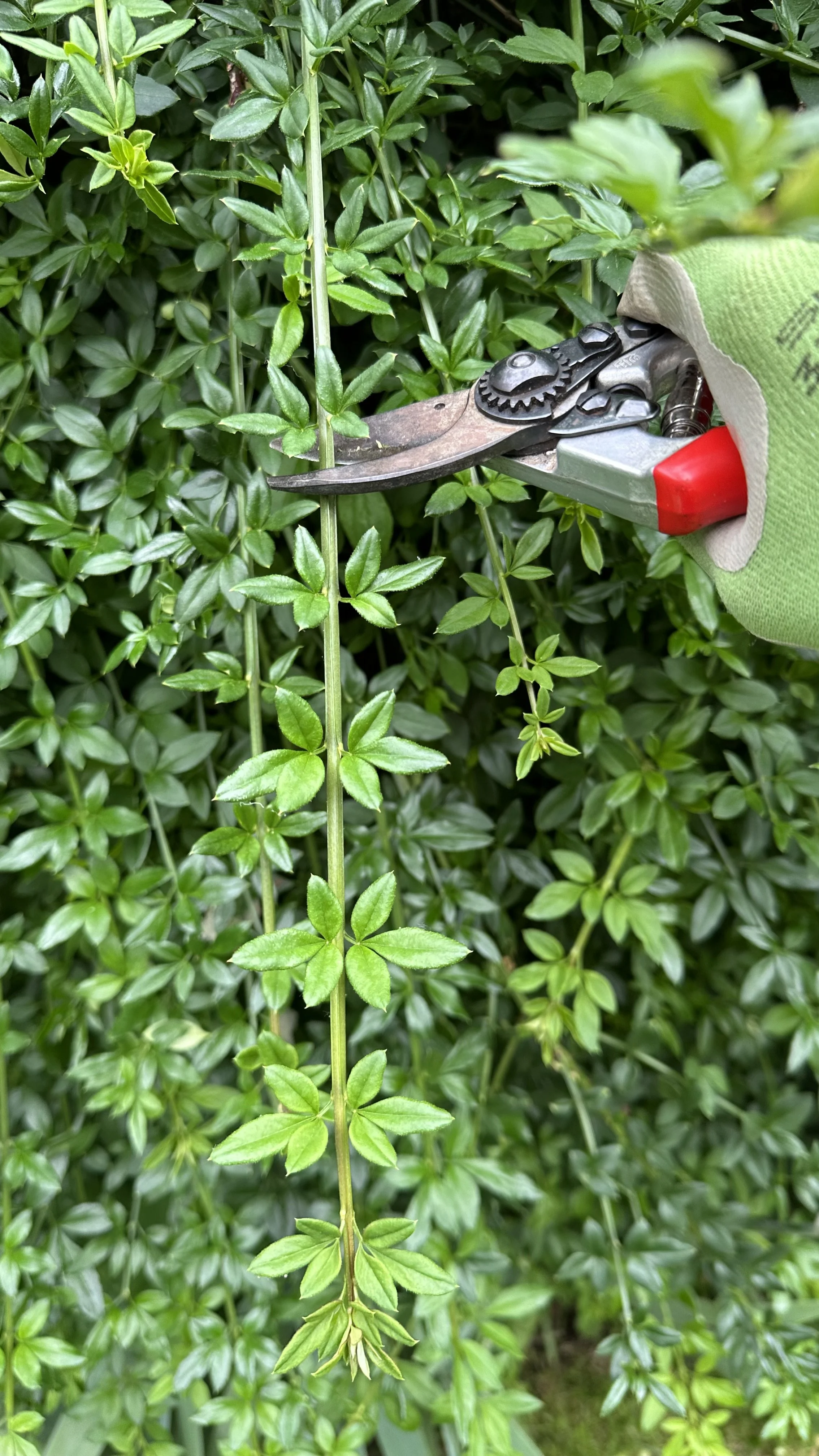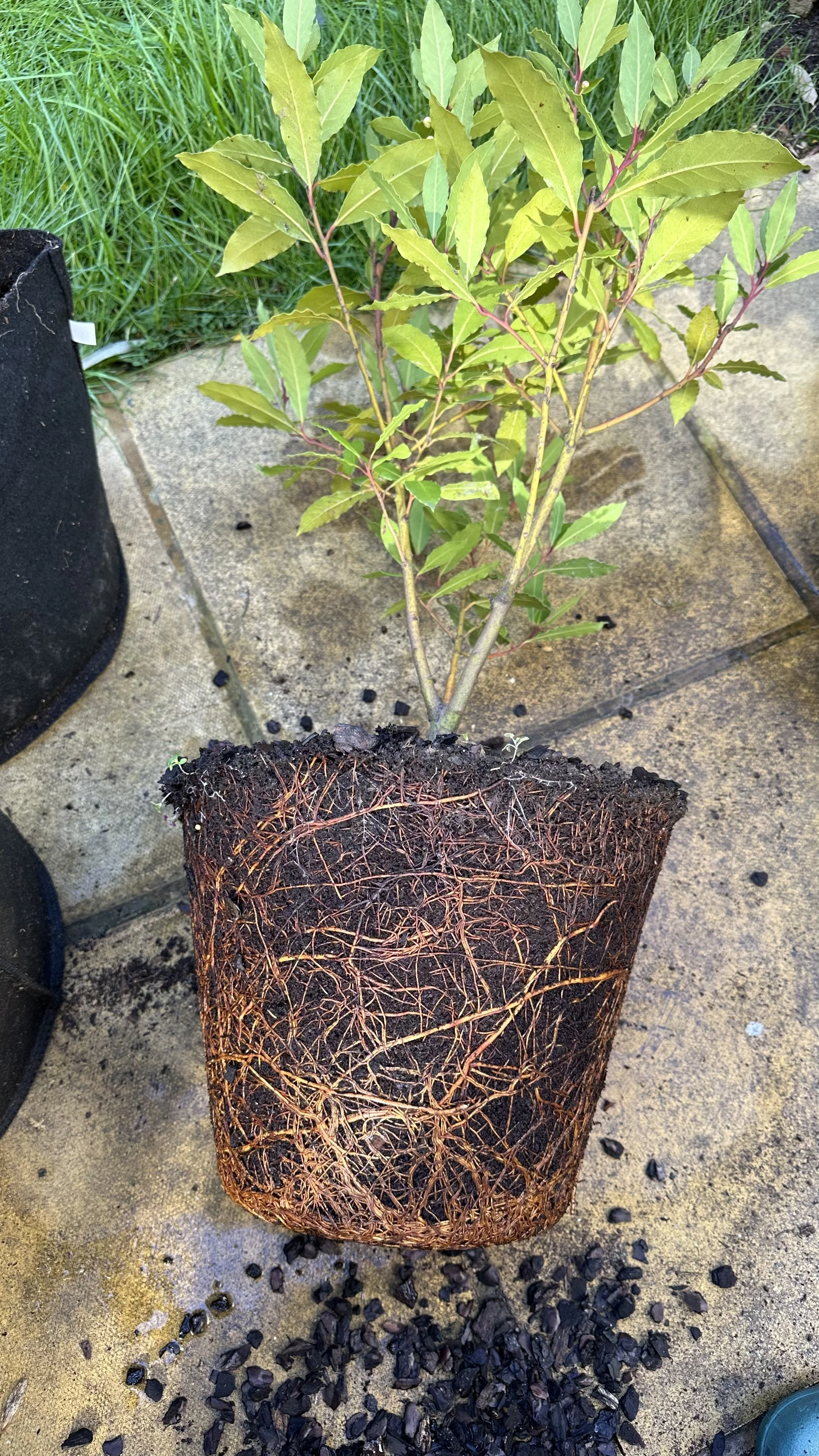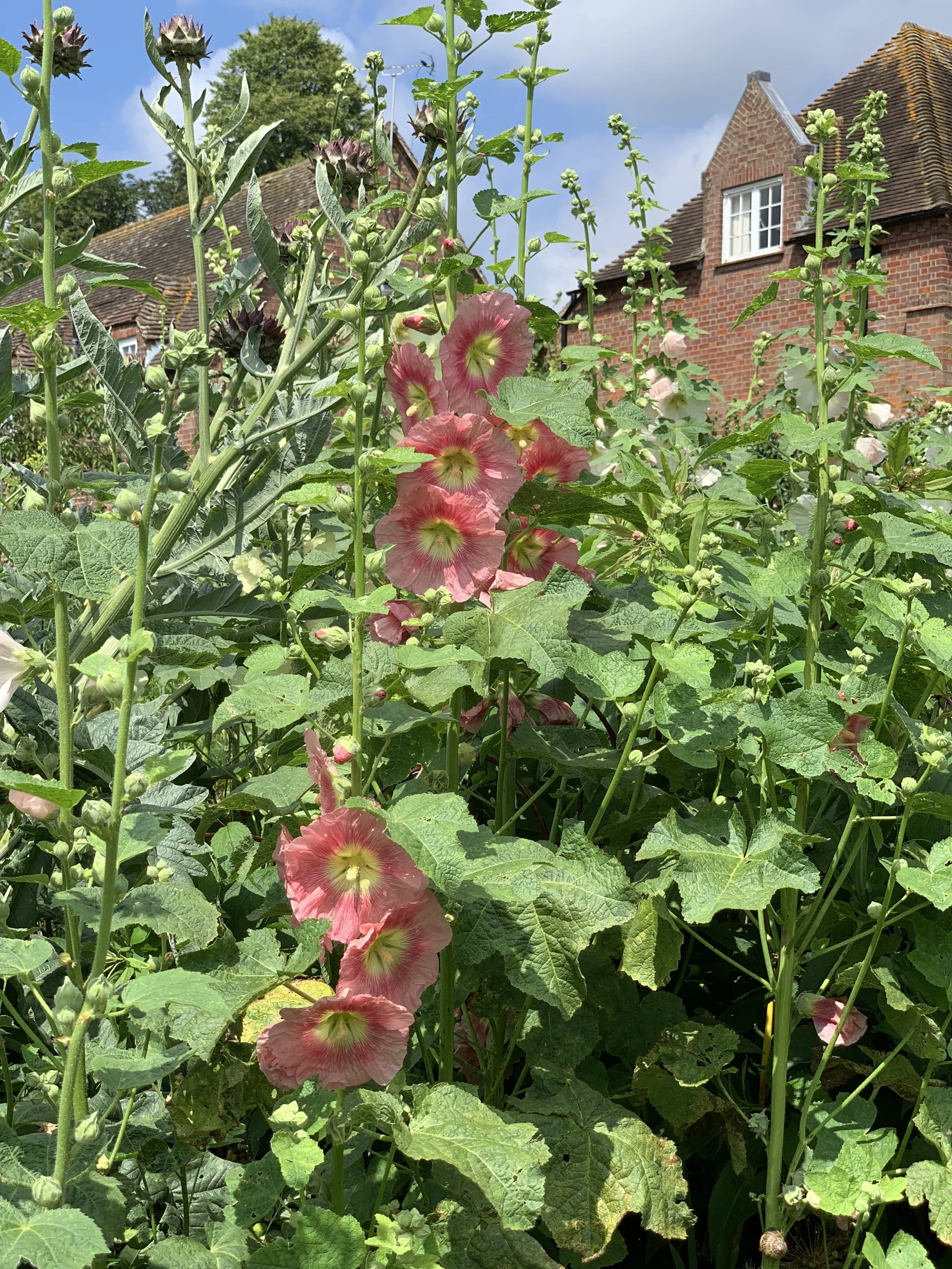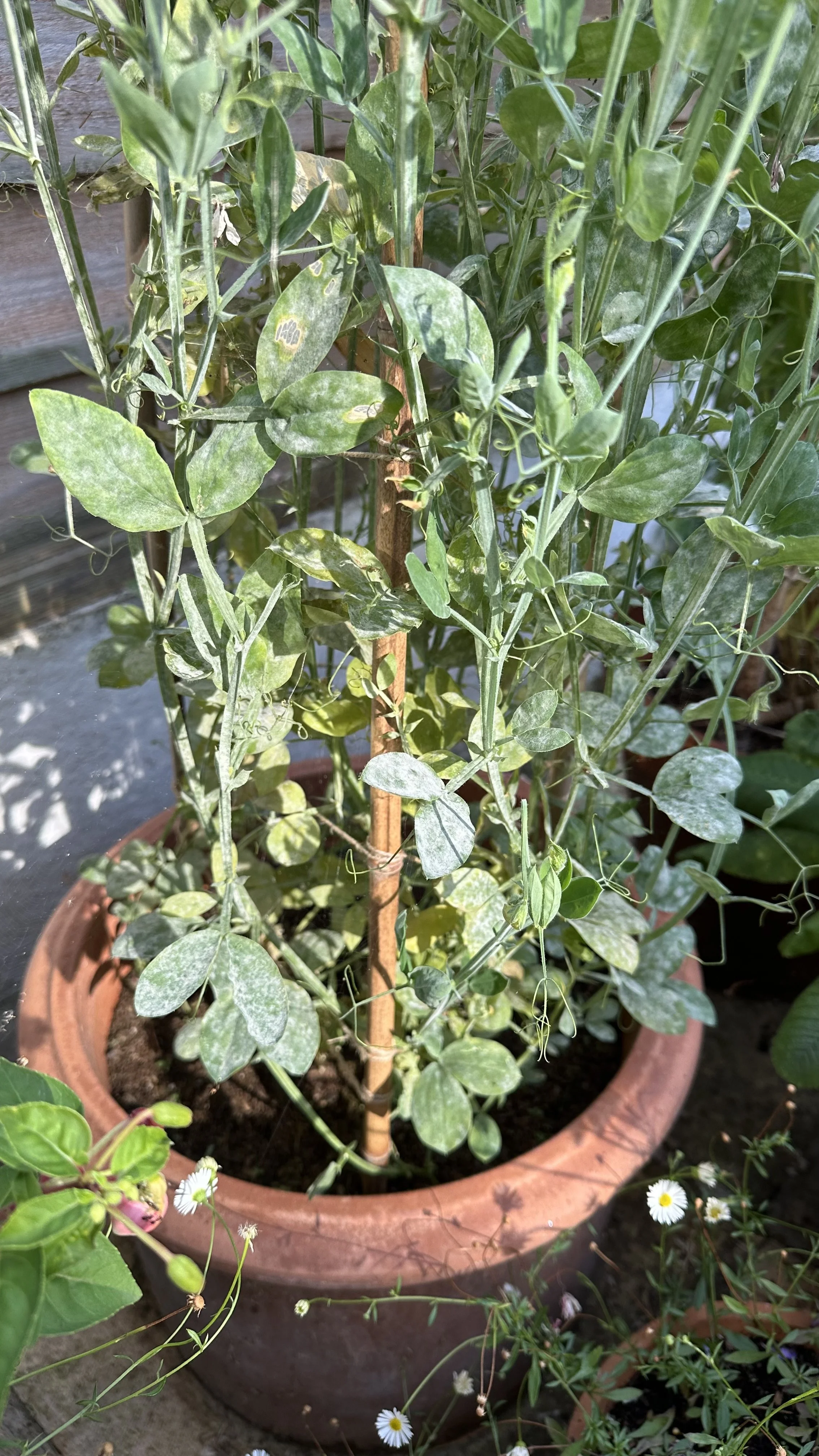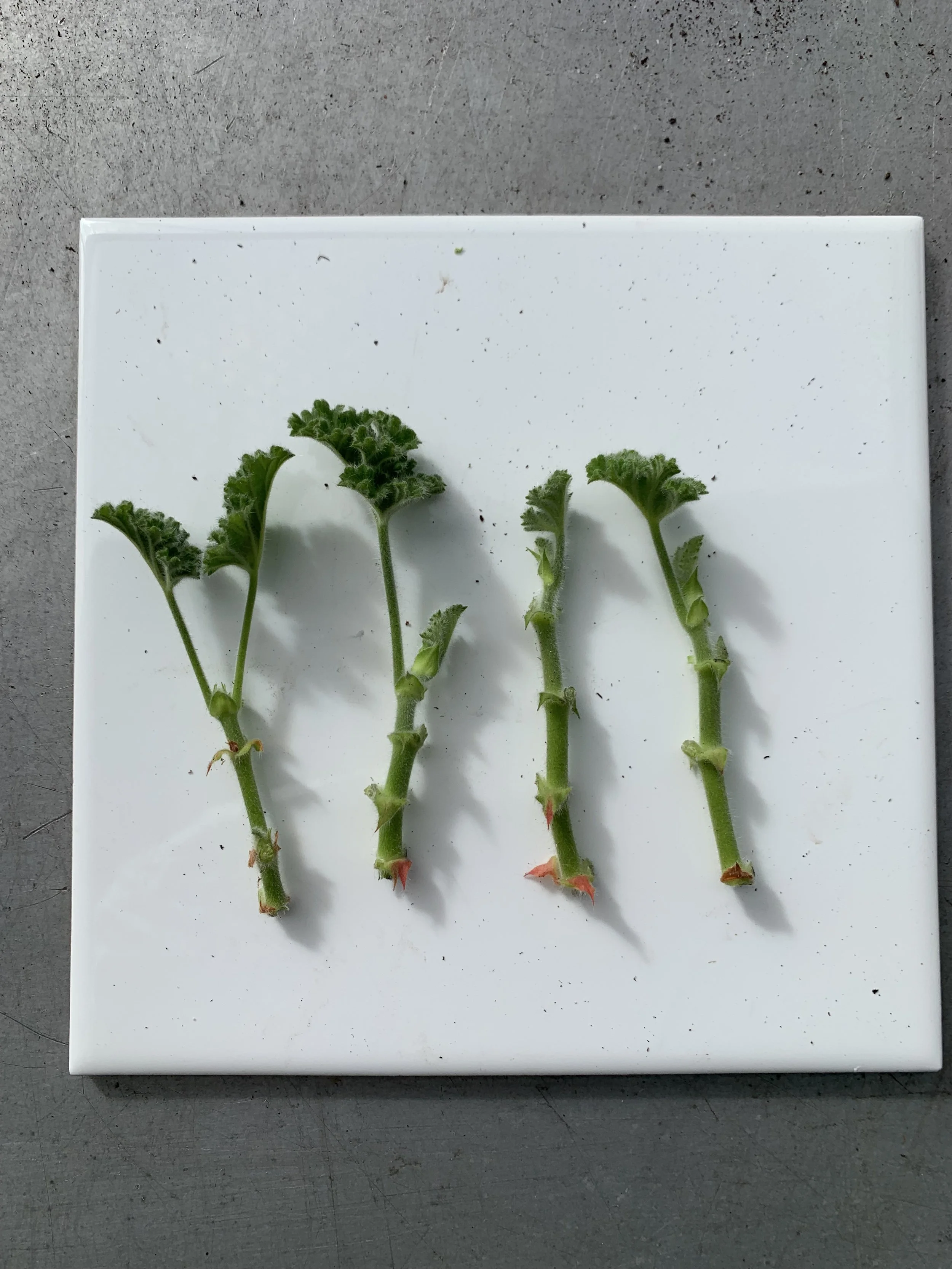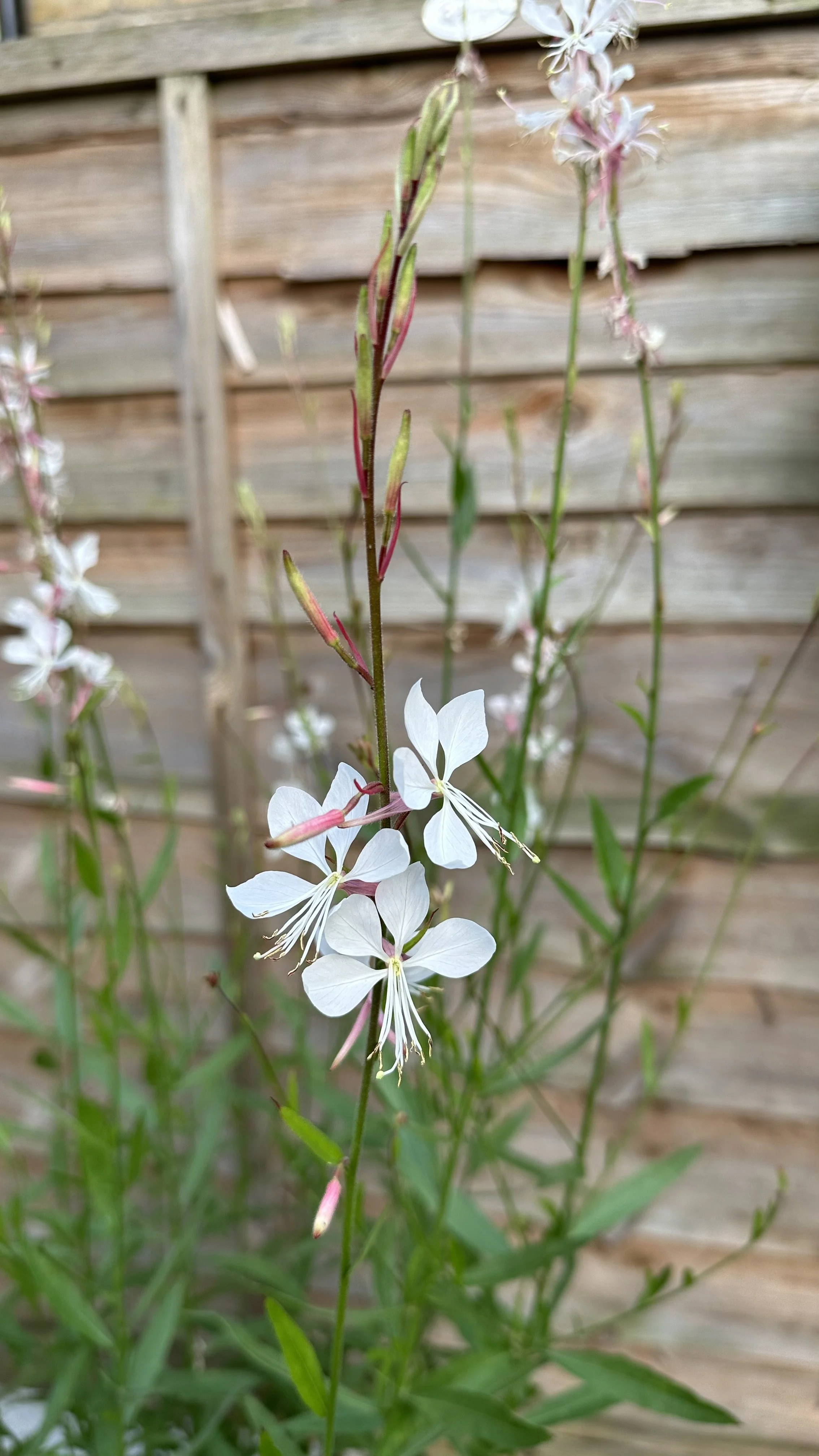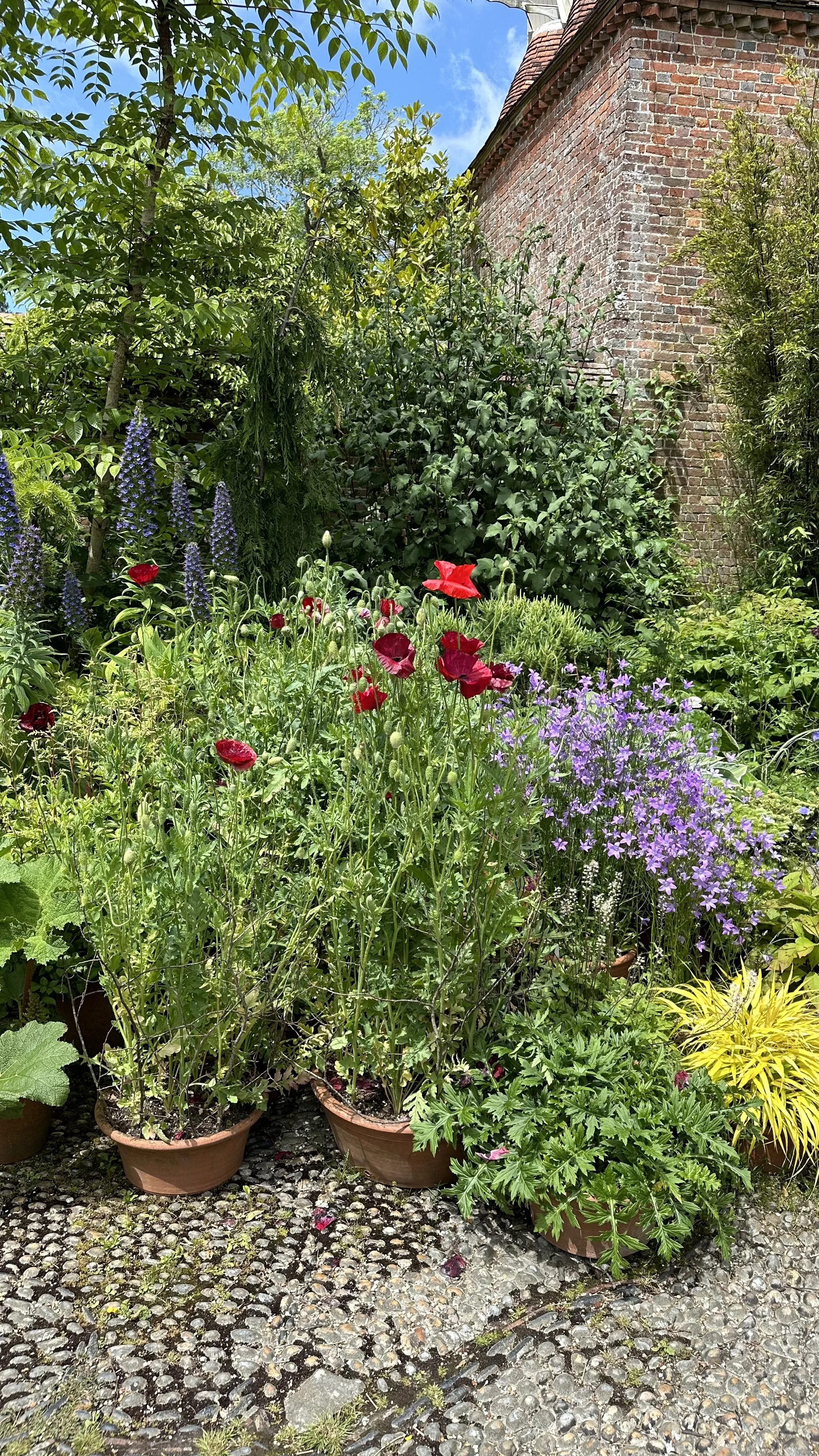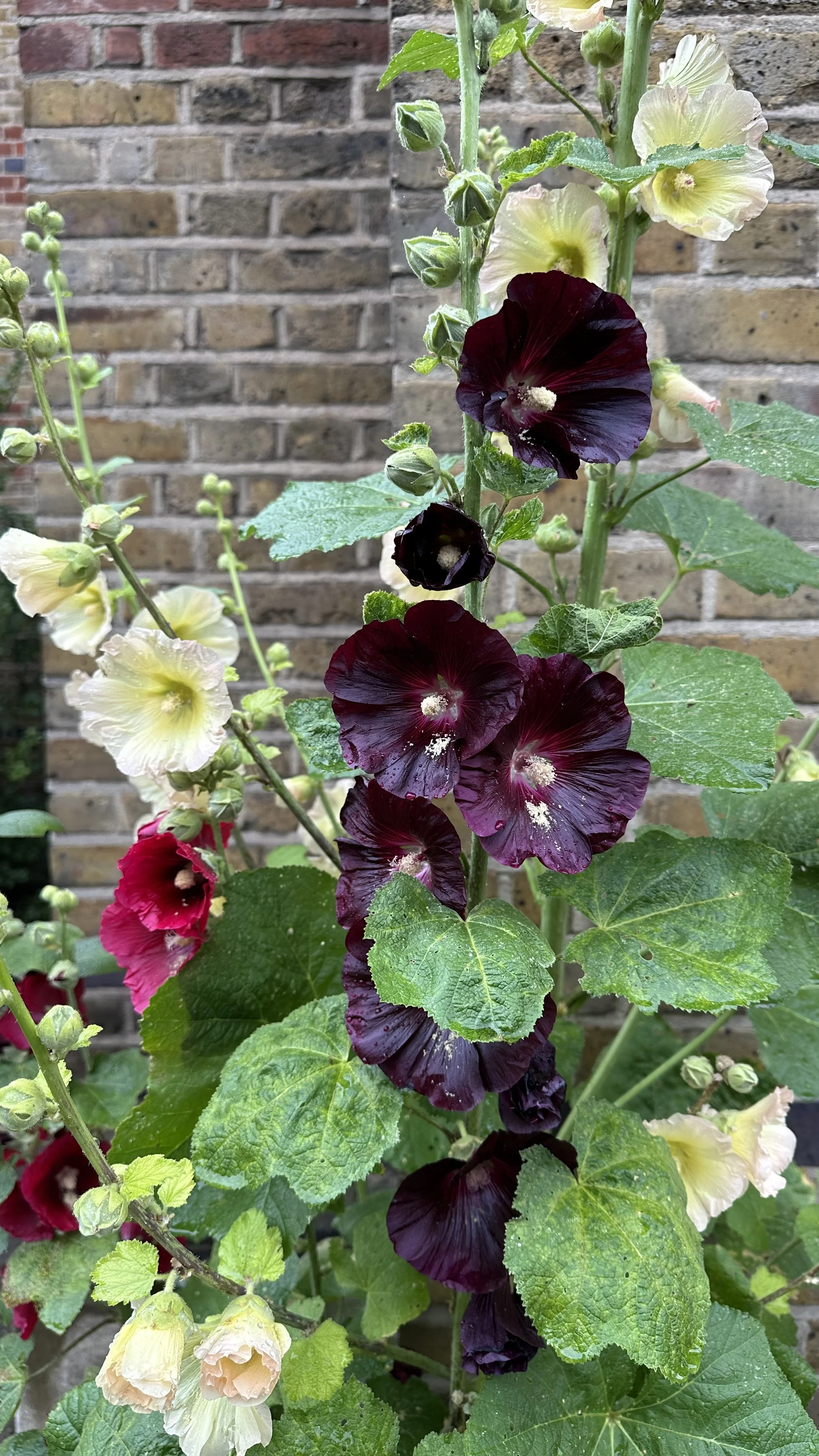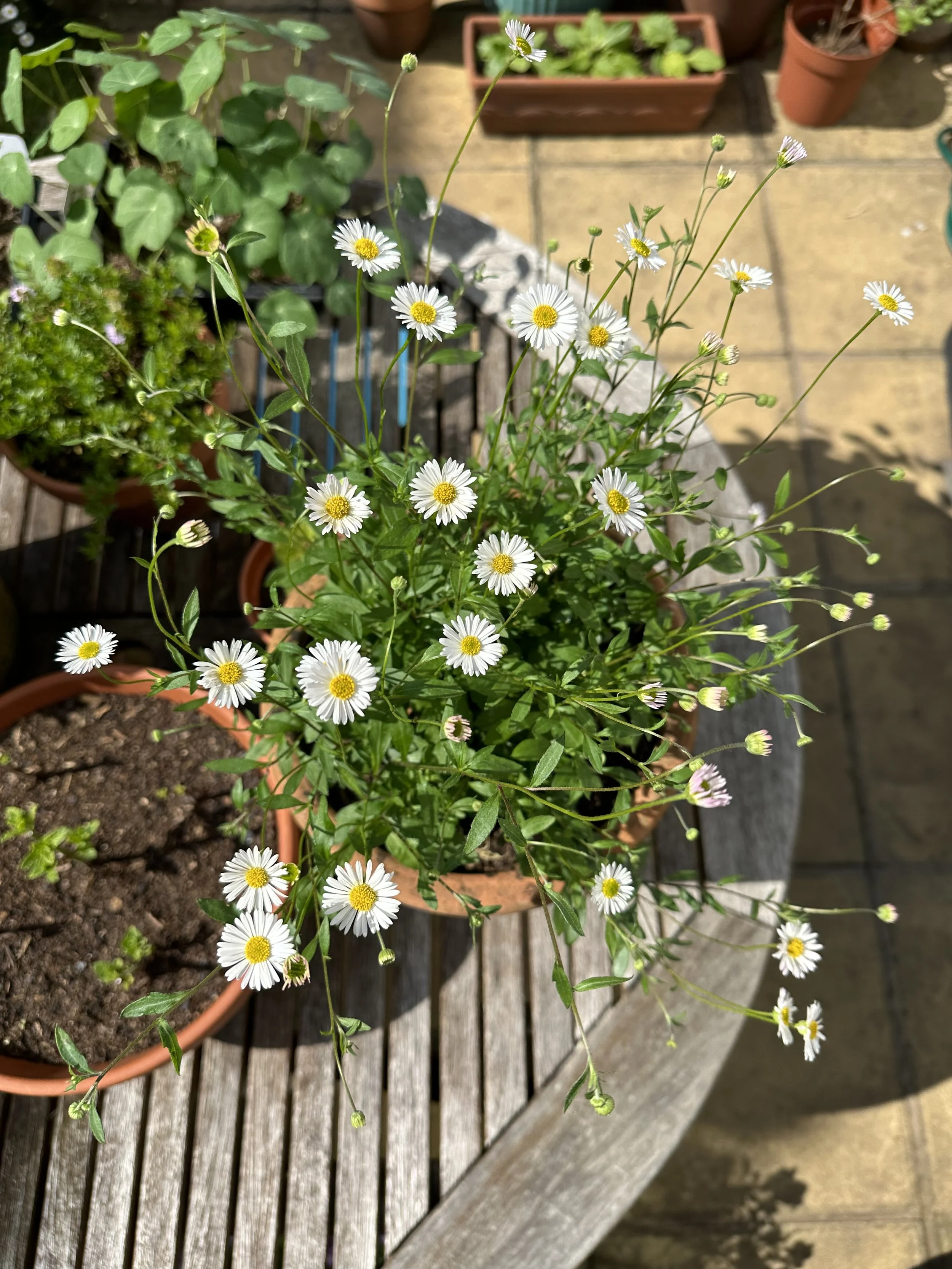Do Hollyhocks Bloom Every Year?
This website is reader-supported - thank you! This post may contain affiliate links. As an Amazon Associate, I earn from qualifying purchases at no extra cost to you.
Hollyhocks have a way of transporting you to simpler times.
Picture a cozy cottage garden brimming with tall spires of bright, cheerful blooms.
As soon as those towering stalks start to sway in the breeze, you know you’re in for a display that’s both classic and eye-catching.
But if you’re new to growing hollyhocks, you might be wondering: Do they bloom every single year?
The answer can be a bit nuanced.
It depends on which type of hollyhock you have, as well as how you care for them.
Despite their old-fashioned charm, hollyhocks are anything but outdated.
I love them for their vertical interest and abundant blooms, which are perfect for filling a sunny corner or framing a fence line.
Whether you’re planting hollyhocks for the first time or trying to coax more flowers out of a patch you already have, understanding their life cycle is key.
Once you do, you’ll be able to keep these beauties around for many years—sometimes without a ton of extra effort.
For more growing tips, check out my guides:
One of my favorite places to spot hollyhocks, Leeds Castle.
Understanding the Hollyhock Life Cycle
When most people talk about hollyhocks, they’re referring to Alcea rosea, which is typically a biennial plant.
A biennial takes two full years to complete its life cycle:
Year One:
The plant focuses on establishing roots and foliage.
You might notice large, fuzzy leaves near the base, but you won’t see any flowers just yet.
It’s all about building up energy for the big show to come.
Year Two:
Hollyhocks enter their flowering phase, sending up those stunning flower spikes that can reach heights of five to eight feet, depending on the variety.
Once they bloom, they set seed and often fade away.
However, it’s not always so cut-and-dry.
Some hollyhock varieties are short-lived perennials, meaning they can return for a few extra seasons under the right conditions.
The trick is in selecting the right type and providing the care they need to stick around.
Even if your hollyhocks behave like strict biennials, you can keep them going indefinitely through self-seeding and a little planning—more on that in a moment.
For more ideas, check out my guides:
Obsessed with the color of these hollyhocks.
Do Hollyhocks Bloom the First Year?
Traditional biennial hollyhocks won’t produce those iconic blooms in their first growing season, since they’re busy developing a strong root system and leafy growth.
This waiting period can feel like a test of patience, especially when you’re excitedly picturing tall, fluttery flowers in your mind.
But trust me, the reward is well worth it once you see those majestic blooms in the second year.
First-Year Blooming Varieties
If you’re not big on delayed gratification, don’t worry—there’s a workaround.
Plant breeders have developed hollyhock varieties that actually bloom in their first year.
This means you can enjoy a colorful display just months after planting, without the traditional waiting game.
If instant impact is what you’re after, look for seed packets or starter plants labeled as “first-year blooming” or “annual hollyhocks.”
You’ll get the cottage-garden vibe you crave in record time, and you can still look forward to reseeding or replanting for continuous color in the future.
For more inspiration, check out my guides:
How to Ensure Blooms Every Year
Because so many hollyhocks are biennial, one of the best ways to keep them blooming consistently is through succession planting.
In practical terms, this means planting new hollyhock seeds each year, so you always have a fresh batch that’s gearing up for its second-year flowering.
Here’s how to make it work:
Plant Seeds Annually:
Sow a few seeds in a different spot—or even the same spot—each year.
In Year One, those new seeds will establish roots and leaves, while last year’s seedlings head into bloom mode.
Embrace Self-Seeding:
Hollyhocks do a lot of the work for you by dropping seeds at the end of their blooming season.
If you allow some flower stalks to go to seed, you might find baby hollyhocks popping up next spring without any extra intervention.
Rotate Your Blooms:
By staggering when and where you plant or by letting them self-seed, you can maintain a cycle where some hollyhocks are in their first year of growth while others are in their second year of flowering.
This rotation keeps the flowers coming back year after year.
For more growing tips, check out these guides:
Caring for Hollyhocks to Encourage Flowering
One of the joys of growing hollyhocks is that they’re pretty straightforward to maintain, but a little extra TLC can make a big difference in the quality and quantity of blooms.
Here are some tips to give your hollyhocks the royal treatment:
1. Soil & Sun
Hollyhocks thrive in rich, well-draining soil.
Mixing in some compost or well-rotted manure will help them get the nutrients they need to produce those showstopping blooms.
They’re sun-worshippers, so aim for a spot that receives at least six hours of direct sunlight daily.
The more rays they soak in, the taller and fuller they’ll grow.
Here is the compost I recommend:
2. Watering & Feeding
Consistent moisture is important, but hollyhocks hate soggy feet.
Water deeply once or twice a week, adjusting based on rainfall and soil drainage.
A balanced, all-purpose fertilizer every few weeks during the growing season will give them the extra boost they need.
Just remember to follow the recommended application rates—over-fertilizing can lead to lush foliage at the expense of flowers.
Here is the fertilizer I recommend:
3. Dealing with Common Problems
One issue you might encounter is rust, a fungal disease that appears as orange-brown spots on leaves.
To reduce the chances of rust:
Space plants to allow air circulation.
Water at the base to keep leaves dry.
Remove and discard any infected leaves (not on the compost pile).
If rust becomes a recurring issue, consider rotating where you plant hollyhocks each year or look for rust-resistant varieties.
Aside from rust, hollyhocks can sometimes fall victim to slugs or snails when they’re young.
Check out my guide: Top Slug Resistant Plants to Transform Your Garden.
4. Supporting Tall Stalks
Hollyhocks can easily reach lofty heights, and in windy or exposed areas, their slender stems might need a little help staying upright.
Consider staking them or planting them near fences, walls, or trellises that can provide some support.
This extra step ensures that your blooms don’t topple over in strong gusts, and it also helps prevent damage to the main stem.
5. End-of-Season Care
When the blooms begin to fade, you have two main choices:
Cut Back the Spent Stalks:
This encourages the plant to send out fresh foliage and sometimes even a few side shoots of blooms.
It also helps maintain a tidy appearance in the garden.
Let the Seeds Drop:
Leaving the stalks in place lets seeds naturally fall to the ground, ensuring future generations of hollyhocks.
You can also collect the seed pods once they’ve dried if you want to plant them in a specific spot next year or share them with fellow gardeners.
I love how someone has tenderly tied this hollyhock bloom to the wall using an old nail.
For more tips, check out my guides:
Beyond the Basics: Adding a Personal Touch
Growing hollyhocks doesn’t just add visual appeal; it also invites pollinators like bees and butterflies to your garden.
If you plant a mix of pink, red, yellow, and white varieties, you’ll be amazed at the flurry of activity throughout the summer months.
You can also experiment with different garden layouts to showcase hollyhocks in creative ways:
Cottage Garden Borders:
Pair hollyhocks with other cottage-garden favorites like foxgloves, cosmos, or Mexican daisies for a timeless look.
Against Walls or Fences:
Let those tall flower spires climb up the backdrop of a fence.
They’ll add height and drama without taking up too much ground space.
Container Gardening:
If you have limited space, try dwarf or compact hollyhock varieties in large containers.
Just make sure to provide ample support and consistent watering.
Another fun aspect of hollyhocks is that they can be a conversation starter.
Neighbors might ask about those “giant flowers” in your yard, giving you a chance to share seeds or gardening tips.
Hollyhocks have been passed down for generations, and they often carry stories with them—where the seeds came from, how they grew in a loved one’s garden, and so on.
Keeping that tradition alive can be part of the joy.
Check out this guides for more growing tips:
The 10 Best Edible Flowers to Grow
Plants That Deter Cats: A Natural Solution to Keep Cats at Bay
FAQs
Do hollyhocks self-seed?
Yes! Hollyhocks are prolific self-seeders.
After they finish blooming, they form seed pods that drop seeds around the plant.
These seeds can sprout the following spring, giving you a fresh crop of hollyhocks even if the original plants have died back.
When do hollyhocks bloom?
Most traditional hollyhocks bloom in their second year, typically from mid to late summer.
However, certain first-year blooming varieties can produce flowers within months of planting.
How long do hollyhocks bloom?
Each individual plant will usually bloom for several weeks, from early summer into late summer, depending on your climate.
With clever succession planting or a mix of varieties, you can extend their overall flowering period well into the warm months.
Are hollyhocks perennial plants?
Standard hollyhocks (Alcea rosea) are biennials, completing their life cycle over two years.
Some types act as short-lived perennials, returning for a few seasons if they’re in a mild climate and receive good care.
Can hollyhocks grow in shade?
They can tolerate partial shade, but full sun is best for strong, upright growth and abundant flowers.
If planted in too much shade, hollyhocks may develop weaker stems and produce fewer blooms.
What should I do with hollyhocks after flowering?
After the blooms fade, you can cut back the flower stalks to encourage new growth or leave them to allow seeds to drop naturally.
If you want to collect seeds, wait until the pods turn brown and dry, then store them in a cool, dry place until you’re ready to plant again.
Do hollyhocks spread?
Yes, they do!
Self-seeding hollyhocks can pop up in different parts of the garden, creating a lovely, naturalized look.
If you want more control, simply collect and sow the seeds in a designated area or remove volunteers as they appear.
When is the best time to plant hollyhocks?
Late summer or early autumn is ideal for planting hollyhock seeds, giving them time to establish roots before winter sets in.
You can also plant in early spring, but note that traditional varieties may not flower until their second year.
Wrap-up
It’s true that most hollyhocks don’t technically bloom every single year from the same exact plant—but with a bit of strategy, you can still enjoy a gorgeous display of hollyhocks flower season after season.
To encourage blooms the following year, consider succession planting—sowing new seeds each season or allowing hollyhocks to self-seed naturally.
This way, while one batch is settling into its first year of root-building, another batch is heading into its glorious second-year bloom.
By keeping an eye on soil conditions, providing adequate sun, and watering consistently (but not too heavily), you’ll set your hollyhocks up for long-term success.
Happy gardening!
Pin this post to save it for later!












